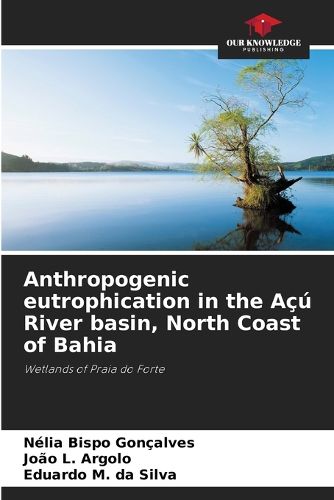Readings Newsletter
Become a Readings Member to make your shopping experience even easier.
Sign in or sign up for free!
You’re not far away from qualifying for FREE standard shipping within Australia
You’ve qualified for FREE standard shipping within Australia
The cart is loading…






Wetlands are fragile ecosystems of great importance for biodiversity, nutrient cycling, flood control, sediment and nutrient retention, water purification and more. They have three clear characteristics: water level variation over a gradient of time, anoxic soils and vegetation typical of waterlogged environments. As these areas were considered unhealthy and difficult to access, they remained untouched for some time. The book describes the changes caused by anthropic actions in the areas flooded by the Acu River, in the municipality of Mata de Sao Joao, on the north coast of Bahia, where several hotel developments have been built. The study highlights the Timeantube lagoon, which resulted from the damming of the Acu River, a project intended to drain areas destined for hotel developments. Although the results of the physical-chemical analyses showed low concentrations of nutrients, it cannot be said that the area is not undergoing a process of eutrophication, highlighting the significant presence of aquatic macrophytes, which absorb large quantities of nitrogen and phosphorus in their biomass, reducing the concentrations of these nutrients.
$9.00 standard shipping within Australia
FREE standard shipping within Australia for orders over $100.00
Express & International shipping calculated at checkout
Wetlands are fragile ecosystems of great importance for biodiversity, nutrient cycling, flood control, sediment and nutrient retention, water purification and more. They have three clear characteristics: water level variation over a gradient of time, anoxic soils and vegetation typical of waterlogged environments. As these areas were considered unhealthy and difficult to access, they remained untouched for some time. The book describes the changes caused by anthropic actions in the areas flooded by the Acu River, in the municipality of Mata de Sao Joao, on the north coast of Bahia, where several hotel developments have been built. The study highlights the Timeantube lagoon, which resulted from the damming of the Acu River, a project intended to drain areas destined for hotel developments. Although the results of the physical-chemical analyses showed low concentrations of nutrients, it cannot be said that the area is not undergoing a process of eutrophication, highlighting the significant presence of aquatic macrophytes, which absorb large quantities of nitrogen and phosphorus in their biomass, reducing the concentrations of these nutrients.